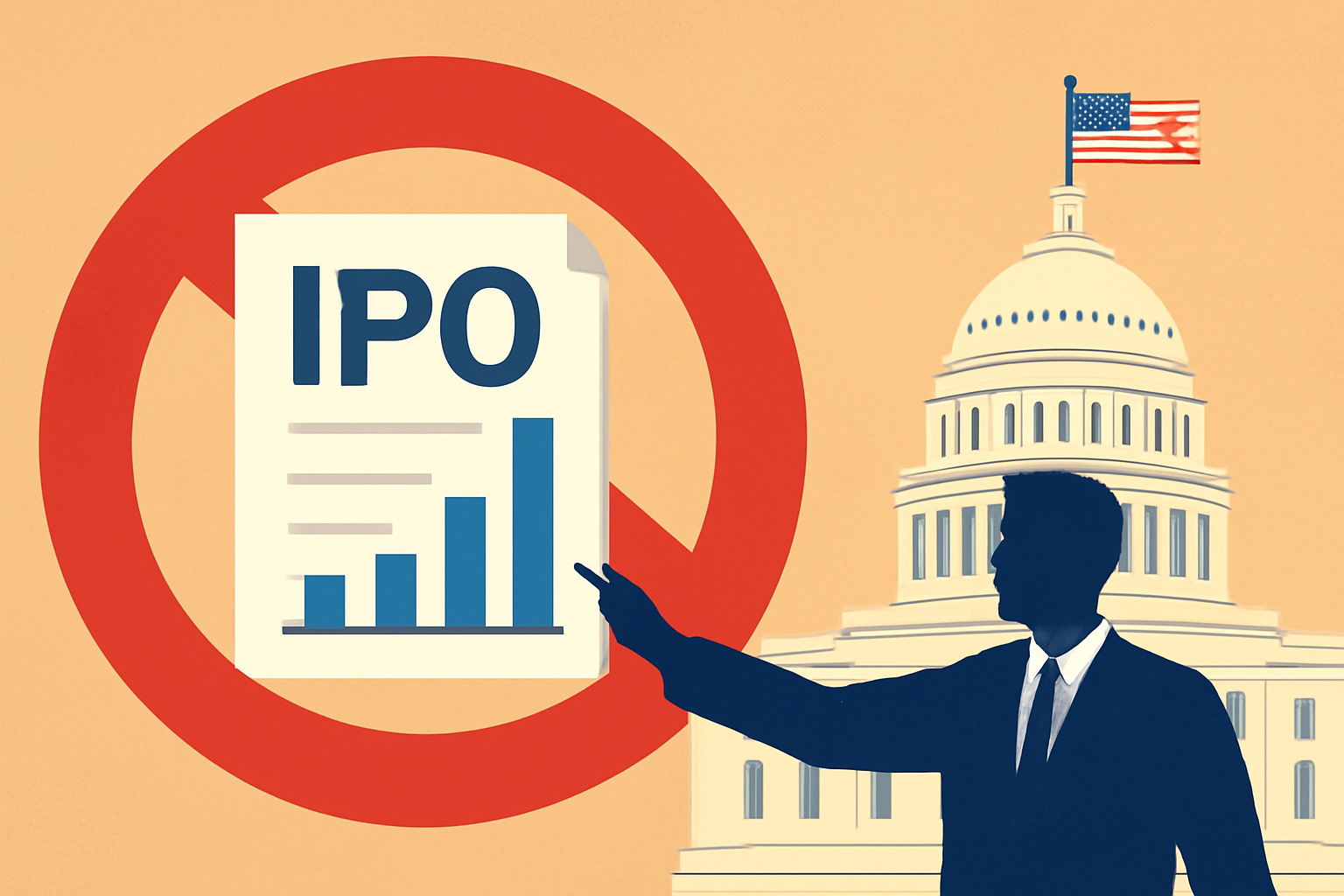As of October 1, the U.S. federal government has officially shut down, halting non-essential operations and putting the brakes on the Securities and Exchange Commission’s IPO review process. The timing is particularly damaging: capital markets were showing signs of revival with more than $50 billion raised in IPOs so far in 2025, marking one of the strongest rebounds since the pandemic-era slump. Now, that momentum risks stalling just as investor enthusiasm was beginning to return.
IPO Momentum Collides with Washington Gridlock
The IPO market has been one of the bright spots of 2025. High-profile listings in the tech, healthcare, and consumer sectors were drawing robust demand, supported by easing inflation, stable rate expectations, and renewed appetite for growth-oriented equities. But the shutdown forces a pause.
Without the SEC functioning at full capacity, companies preparing to file or awaiting review for listing approvals will face delays. According to Reuters, the backlog could grow quickly if the shutdown persists, jeopardizing launches slated for Q4 — a historically busy window for deals.
This disruption comes at a fragile moment. After years of sluggish activity, global markets had turned optimistic that U.S. listings would reassert leadership in capital formation. The pause now raises questions about how much deal flow may be lost or deferred into 2026.
Why This Matters for Investors
The implications extend beyond dealmakers and issuers. Investors who had positioned portfolios to capture the IPO rebound — particularly in growth and tech sectors — could face near-term disappointments. A delayed pipeline may:
- Reduce equity market catalysts at a time when investor confidence relies on fresh growth stories.
- Trigger repricing risk if pent-up deals eventually flood the market at once, straining demand.
- Heighten volatility in related sectors such as investment banks, asset managers, and exchange operators.
For retail investors, the lack of new opportunities could shift flows back into established equities or alternative assets like private credit and venture debt.
Future Trends to Watch
The path forward hinges largely on Washington politics. If the shutdown ends quickly, the backlog could be cleared within weeks, enabling IPOs to resume before year-end. However, a protracted shutdown could reshape the calendar entirely, pushing key names into 2026.
Investors should monitor:
- SEC operational updates — when the agency can resume IPO reviews.
- Statements from issuers — particularly high-profile tech and biotech firms with multibillion-dollar valuations.
- Market sentiment shifts — whether enthusiasm for IPOs holds or fades in the face of uncertainty.
Notably, analysts at Bloomberg Intelligence suggest that companies already cleared for listing may benefit from pent-up demand, provided markets remain receptive when trading resumes.
Key Investment Insight
For investors, nimbleness is critical. Companies that are already SEC-cleared or near final filing may capture strong upside when windows reopen. However, the risks of delay, backlog, and issuer pullback are material. Allocations into IPO-focused ETFs or bank stocks tied to dealmaking should be evaluated with caution. Diversification into sectors less dependent on capital markets activity — such as defensive equities or dividend plays — may offer balance during this period.
As the political standoff unfolds, the fate of the IPO pipeline will serve as a key barometer for U.S. market dynamism. Investors who stay informed on regulatory developments and market sentiment will be best positioned to capture opportunity when the window finally reopens.
Stay with MoneyNews.Today for daily insights on how political and market events are shaping investment opportunities.





